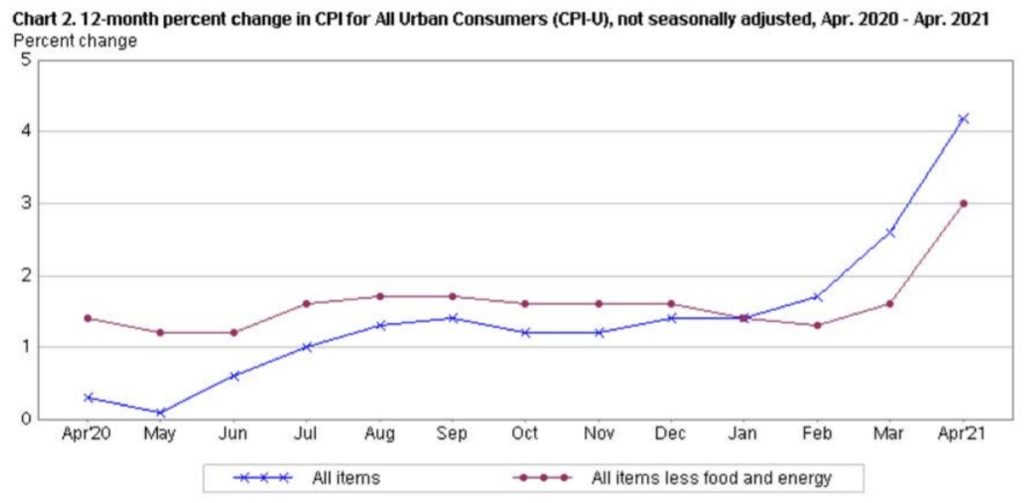Implement Price Increases
As a business leader, you pride yourself on providing quality goods and services. Your goal is to satisfy each of your customers so they keep coming back for more as time goes by. And, of course, you’re in business to turn a profit. Realistically, the prices you charge today can’t stay the same forever. You’ll likely need to increase them at some point.
The issue of raising prices is that everyone wants to save money. It can seem like a challenge to determine how to raise prices and keep customers from leaving to find a more affordable option. Implementing a new pricing strategy can help you navigate these complexities and accomplish an effective cost increase for your business.

Why Would You Want to Increase Prices?
Before raising your rates, you need to know why you might need to bump them up in the first place. Charging more money for your products and services is a result of various factors, including the following.
Business growth: Depending on the size of your business, adding some employees or expanding your departments can demand a price increase. You’ll need the income to pay your new team members, and a price increase can help you achieve that.
Increase in business costs: Raw material costs can change at a moment’s notice. For instance, an increase in the price of lumber can cause a construction company to ask more for building a new home. Or, a shipping business may charge more for deliveries as gasoline costs go up. As business costs increase, so too do the costs of the final product or service.
Quality control: In most instances, your product’s or service’s quality takes a higher priority than setting a lower cost than your competition. Maintaining your business’ reputation is a typical and worthy justification for raising your prices.
New services: You may need to increase your prices if you’re planning to offer a new product or service. If your customers have been asking for something that will cost you more money to produce, they may be willing to pay a higher price to receive it.
Market value: Ensure you’re setting your prices based on how your customers value you. If your costs are lower than your competition’s, there’s an excellent chance it’s time to charge more to keep your business competitive and profitable.
How Can You Increase Your Prices Effectively?
Historically, price changes were so common that customers expected it when a new year rolled in. Today is a bit different – price changes are rare and unpopular. With the market currently in hyperinflation, it is more timely than ever for companies to investigate price increases to keep up with higher input costs. The question becomes, how can you convince resistant customers to accept an increase? One wrong move can produce costly consequences, as many companies have figured out. With our experience in implementing price increases for clients, we wanted to share four best practices to keep in mind:
- Set your price based on facts
- Equip your sales force with the tools to communicate the price increase / address objections
- Manage your communication process with a well-crafted message
- Predict competitive reaction
1) Setting a Fact-Based Foundation
Before any price increase occurs, you first must conduct a detailed landscape analysis to build your foundation to answer why your price is increasing. Three key components to focus on are the general market sentiment, your customer sentiment, and the value your offering provides to get an external and internal perspective on your price increase’s suitability.
a) CPI
One way to understand the general market sentiment is to track the historical prices of your products along with competitors’ and compare it with a broad market measure like the Consumer Price Index. If you see that your prices have not kept up with the CPI even with a 5% increase, this gives you an indication that your price increase is fair (and customers would agree).
Source: US Bureau of Labor Statistics
b) Transaction Analysis
The best way to understand your customer is to utilize your transaction data to analyze customer purchase behavior. For example, you can leverage the data to create customer and product segments, based on behavioral attributes like average spend, frequency of purchase, etc. You can then model willingness to pay (elasticity) for each segment helping you identify areas where pricing leverage exists. Moreover, your transaction data gives you insight into how your customer segments have changed over time, so you know which segments to prioritize and invest in while also positioning your pricing to account for future changes. Setting your pricing based on the needs of the customer will ensure successful execution in the market.
C) Value Add
In addition to understanding your customers, you want the customer to understand you too. More specifically, you want the customer to understand the value your product or service adds to their life. There are two ways to assess value – perceived and financial. Perceived value is how customers feel about your offer while financial value is the business case justifying the use of your offers versus the next best alternative. To accept your price increase, your customers must clearly understand both the perceived and financial value gained from your product or service. For example, if your customers value quality, reliability, and responsiveness, these attributes must be highlighted in your offering to help users see what incremental value you offer. Otherwise, your customers may feel your price increase is unwarranted since they are not considering your value adds.
2) Equipping Your Sales Force
As the front-line representatives for the company, your sales force needs to align with the price increase to ensure the company continues to run smoothly. They need to believe that the price increase is fair and should be trained to confidently communicate the message to customers. Senior management should have an aligned strategy on how to ensure their sales force can handle any problems that may come from the price increase. For example, if a client responds negatively to the price increase and elevates the issue to management, there should be internal alignment on what the next steps are. You can conduct mock interviews with your sales force, simulating various customer reactions to the price increase with low, medium, and high resistance. This helps your team understand how to communicate your price increase effectively. Sell stories should also be prepared for your sales force to standardize the messaging around the price increase and ensure consistent delivery.
3) Effectively Communicate Your Message
No one likes a sudden price increase, especially customers. To successfully implement a price increase, you should let them know in advance what is to come. Your sales force should be communicating with customers about any price changes ahead of time. Further, they should be available to answer any questions the customers may have during the price increase period. If you anticipate some or all of your clients may not yet be receptive to the price increase, consider increasing notice periods giving them extra time to internalize the increase.
4) Predict Competitive Reaction & Industry Research
Companies must also consider how competitors may react to your price increase and plan a suitable response. If competitors follow your lead, what would that mean for you financially? What if they do not follow your lead? You can always run different simulations to understand competitor reactions and devise playbooks accordingly. For example, you can take a pilot price increase on a subset of products to test the waters before layering on the increase across your portfolio. Some companies hold a press conference a couple of months ahead of a price increase to see if competitors follow or not. If they do, then the price increase is followed through. If not, select mitigating actions can be put in place.
When implementing price increases, you need to keep your pulse on the industry. Optimizing your prices based on what your competitors charge is an excellent way to do this. Research current market rates, so you can maximize your profits. Here are some things to remember when comparing your prices to others in the industry.
- Avoid being too pricey: Aiming too high can cause you to lose some customers if they feel you’re overvaluing your product or service. However, a higher price backed by quality can attract customers who are willing to pay more for an outstanding experience. You’ll need to be ready to justify charging more than the rest of the market.
- Avoid being too inexpensive: Undervaluing yourself is also a mistake. If your prices are far less than your competitors’, you could be missing out on profits. Some people may choose your company based on your low price alone, but others may be skeptical of the quality you offer.
- Set yourself apart so your pricing makes sense: Whether your new price is lower or higher than your competition, it should be realistic. Some companies can charge less than their competition because they produce the materials they use for their products. Others charge more because they use premium, organic or valuable resources. Let your customers know the unique information that sets your company apart from the rest and justifies your price.
Post-Price Increase Analysis
Once a price increase has been implemented, you must follow up with customers – your success depends on it! Pay attention to what types of reactions your customers have with the price change. In fact, you may even realize customers did not even notice the price change, which gives you an inclination about how future increases will turn out. In addition to monitoring customers’ reactions / complaints, you should always understand actual post-performance versus forecast to verify the elasticity across each customer segment and adjust where necessary. One thing to note is that sometimes price increases do not last (or ‘stick’). To avoid this, be sure to avoid these 5 pitfalls when implementing a price increase.
How Can You Let Your Customers Know About Price Increases?
One of the most significant challenges in implementing a new pricing strategy and charging more is keeping your customers happy throughout the process. Here are some ways you can let your clientele know that you’re raising your prices.
- Contact them directly: Your customers will feel appreciated if you inform them of the price increase before it happens, especially longtime clients who have been supporting your business for years. Reach out to your customers — by name, if you can — and keep them in the loop about what you’re doing and why.
- Give plenty of advance notice: Letting your customers know about the increase is essential, but giving them time to process the information is equally critical. Allow clients time to adjust their budgets by telling them about your intentions several months in advance.
- Frame the increase in a positive light: Be confident when telling your customers about the price increase and frame it in a positive light. Push the point that the elevated price will add more value to your product or service and maintain your consistent standards of excellence.
- Let customers reach out with questions and concerns: Keeping an open line of communication after the price increase is part of making patrons feel valued and educating them on why you increased your prices.
Contact Revenue Management Labs to Help Implement a New Pricing Strategy
Choose Revenue Management Labs to help you set a new price for your business and maximize your profits. We service various industries, so you can trust us to meet your unique pricing needs. We bring the following specialized abilities to the table for every project:
- Big data capabilities to enable rapid implementation so you can set your new price faster
- Advanced analytics so you can make accurate business decisions
- Top-tier talent that can turn your vision into a reality
Our team can help you execute a strategy that works for you. Contact us today for more information and schedule a free consultation. We look forward to serving you!
ABOUT THE AUTHOR Michael Stanisz is a Partner at Revenue Management Labs. Revenue Management Labs help companies develop and execute practical solutions to maximize long-term revenue and profitability. Connect with Michael at mstanisz@revenueml.com







